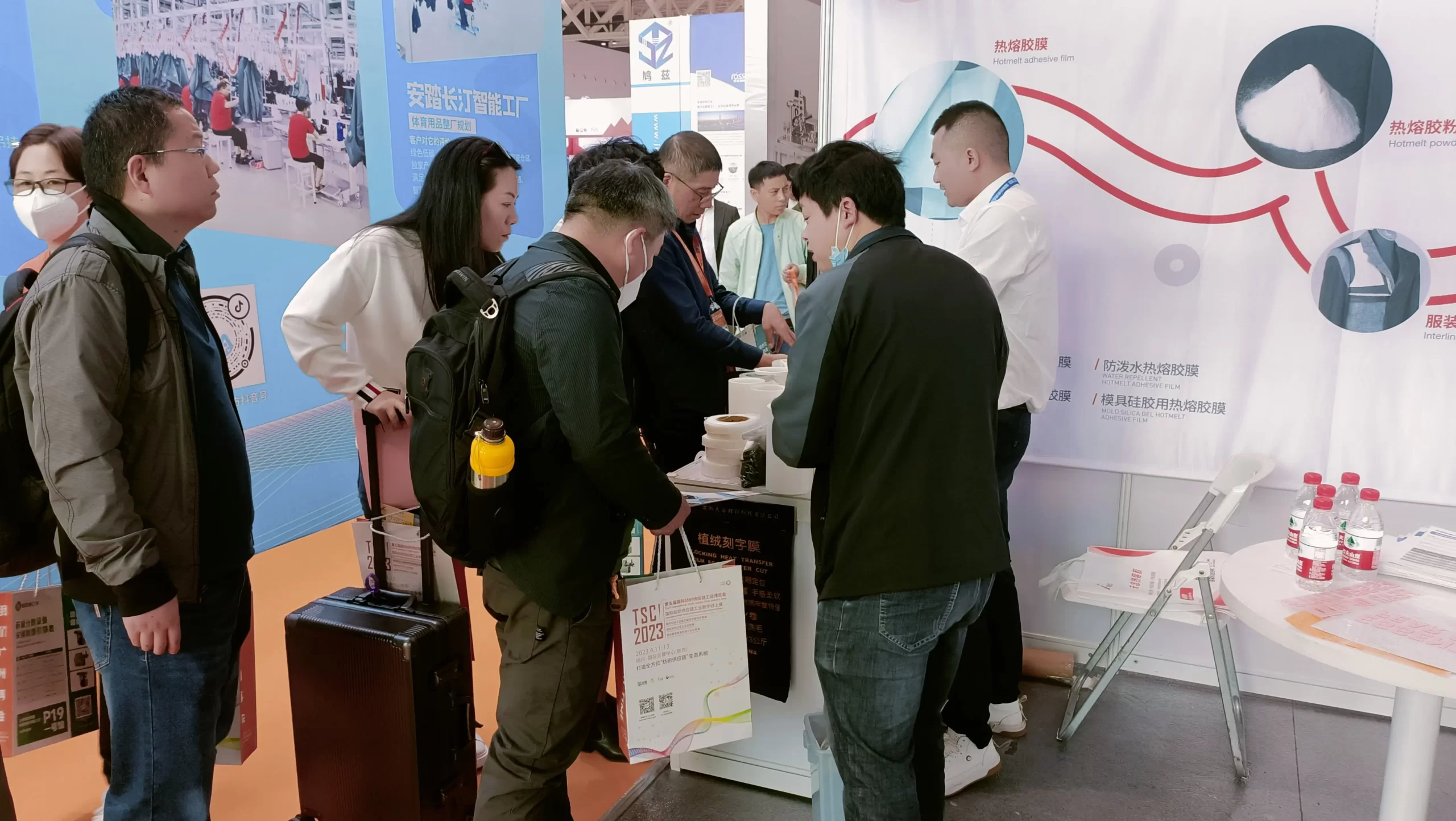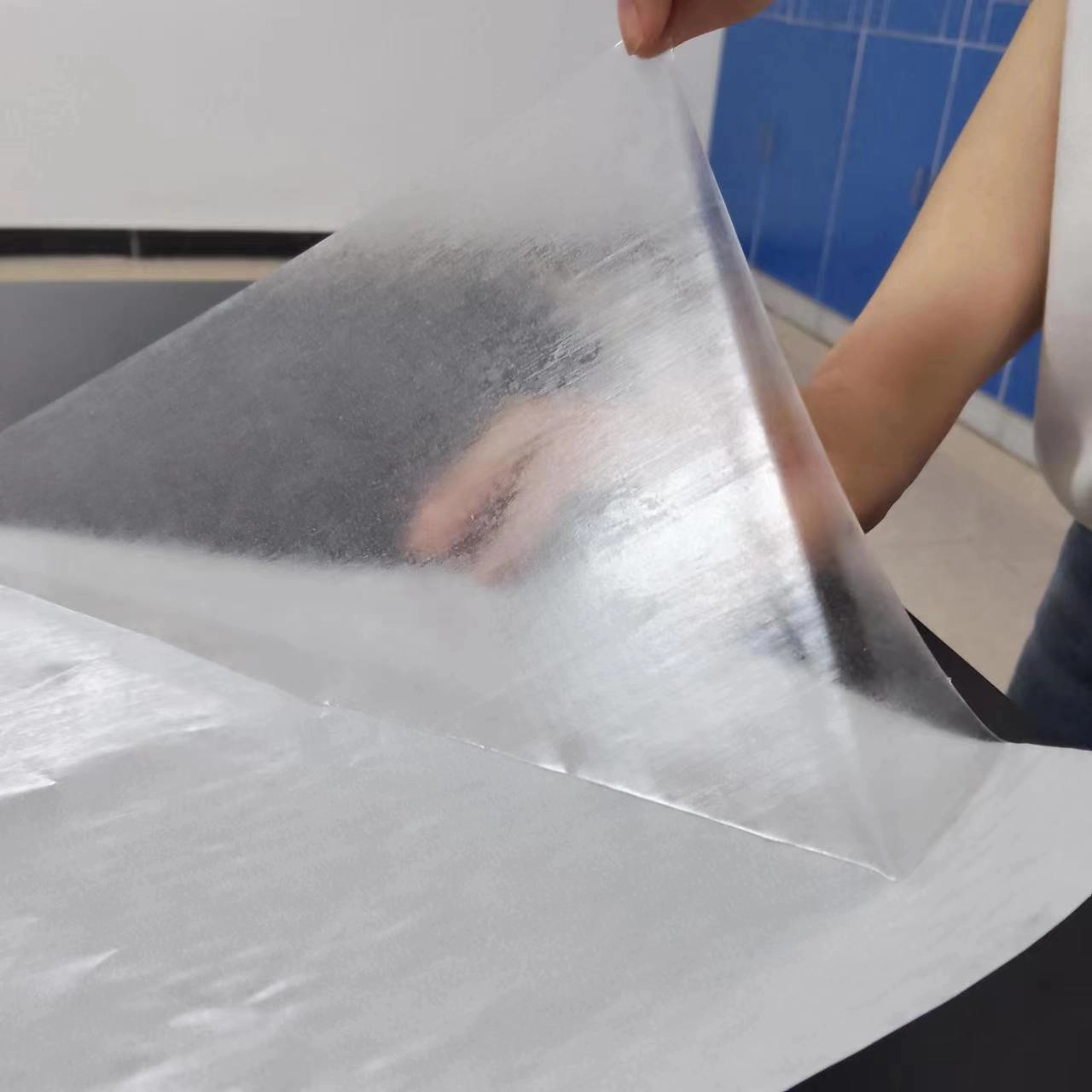Análisis de la estabilidad a largo plazo de la película adhesiva termofusible
Hora de lanzamiento: 2025-05-10
Las películas adhesivas termofusibles, como material de unión ecológico y eficiente, se utilizan ampliamente en diversos sectores industriales. Su estabilidad a largo plazo es crucial para garantizar la longevidad, el rendimiento y la fiabilidad del producto. A continuación, se presenta un análisis de la estabilidad a largo plazo de las películas adhesivas termofusibles, que ayuda a comprender su comportamiento en diferentes condiciones ambientales y de uso.
1. Estabilidad térmica de la película adhesiva termofusible
Las películas adhesivas termofusibles se utilizan generalmente dentro de un rango de temperatura determinado, lo que hace que su estabilidad térmica sea especialmente importante. Tras alcanzar su punto de fusión, la película adhesiva se solidifica rápidamente, pero la exposición prolongada a altas temperaturas puede degradar su estructura molecular. En entornos con temperaturas extremadamente altas, la fuerza adhesiva de la película puede debilitarse, lo que afecta a su estabilidad a largo plazo. Para mejorar la estabilidad térmica, los fabricantes suelen añadir estabilizadores térmicos para retrasar el proceso de degradación.
2. Impacto de la radiación ultravioleta y la exposición a la luz
La radiación UV y la exposición a luz intensa son otros desafíos que afectan la estabilidad a largo plazo de las películas adhesivas termofusibles. La exposición prolongada a la luz solar o a la radiación UV puede causar la fotodegradación de los polímeros de la película adhesiva, lo que provoca decoloración, fragilización o disminución de la resistencia adhesiva. Por lo tanto, en aplicaciones expuestas a ambientes exteriores o a luz UV intensa, la selección de películas adhesivas termofusibles con estabilizadores UV puede prolongar eficazmente su vida útil y mantener la estabilidad de su rendimiento.
3. Impacto de la humedad y el agua
La humedad y la humedad son factores clave que influyen en la estabilidad de Películas adhesivas termofusibles impermeablesEstas películas suelen presentarse en forma sólida y se vuelven adhesivas al calentarse. Al exponerse a la humedad o a ambientes con alta humedad durante períodos prolongados, el agua puede penetrar la película adhesiva y afectar su rendimiento de adhesión. En aplicaciones que requieren exposición prolongada a la humedad, como entornos industriales subacuáticos o con alta humedad, puede producirse la hidrólisis de la película adhesiva, lo que reduce su rendimiento. Para mejorar la resistencia al agua, los fabricantes suelen incorporar componentes resistentes a la hidrólisis en la película adhesiva.
4. Estrés mecánico y fatiga
Durante el uso prolongado, las películas adhesivas termofusibles pueden estar sometidas a tensiones y esfuerzos mecánicos, lo que afecta significativamente su estabilidad. La tensión continua puede causar fatiga, lo que provoca el agrietamiento o la delaminación de la capa adhesiva. La estabilidad de la película adhesiva puede disminuir al exponerse a tensiones mecánicas sostenidas. Por lo tanto, en aplicaciones donde se prevén cargas mecánicas elevadas, se recomienda elegir... Película adhesiva termofusible de alta elasticidad es esencial para garantizar la estabilidad a largo plazo.
5. Estabilidad química
La estabilidad química de las películas adhesivas termofusibles también es crucial cuando entran en contacto con diversos productos químicos. Muchos productos químicos, como ácidos, álcalis y disolventes, pueden reaccionar con la película adhesiva, provocando una disminución de la resistencia de la unión o incluso corrosión. En ciertas aplicaciones especializadas, como entornos con ácidos o álcalis fuertes, la estabilidad química de la película adhesiva es vital. Selección TPU películas adhesivas termofusibles Con alta resistencia química y propiedades anticorrosivas pueden mejorar significativamente su estabilidad a largo plazo.
6. Oxidación y envejecimiento
Con el tiempo, las películas adhesivas termofusibles pueden oxidarse debido a la exposición al oxígeno del aire, lo que reduce su rendimiento. Este proceso puede afectar su fuerza adhesiva, elasticidad y transparencia, lo que a su vez afecta su durabilidad. Al mejorar la formulación de la película, añadir antioxidantes y aumentar la resistencia a la oxidación, se puede retrasar este proceso, mejorando así su estabilidad a largo plazo.
La estabilidad a largo plazo de las películas adhesivas termofusibles se ve afectada por diversos factores, como la temperatura, la humedad, la radiación UV, la tensión mecánica y la exposición a sustancias químicas. En la práctica, seleccionar el tipo adecuado de película adhesiva, mejorar su resistencia al calor, a los rayos UV, al agua y su estabilidad química, son medidas cruciales para garantizar su rendimiento a largo plazo. Al mejorar la formulación y el diseño de la película adhesiva, se puede aumentar significativamente su fiabilidad, satisfaciendo así las exigencias de durabilidad y estabilidad en diferentes sectores industriales.


